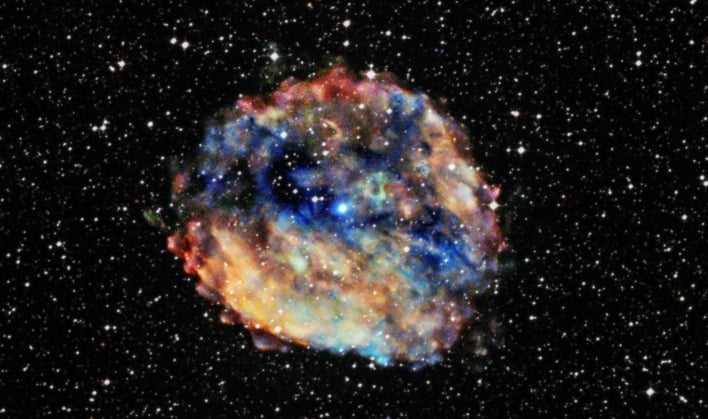Astronomers Detect Mysterious Heartbeat Radio Signal From A Far Away Galaxy
Teams of scientists and astronomers are continuously searching for signs of life outside of our own in the depths of space. Sometimes radio signals are picked up and are classified as FRBs, which typically last for a few milliseconds at most. The fact that one of the latest FRBs to be detected lasts for up to three seconds has astronomers at MIT and elsewhere wondering what the source might be.
The researchers have labeled the new FRB as 20191221A, and is the longest-lasting FRB with the clearest periodic pattern found to date. The team says the bursts of radio waves repeat every 0.2 seconds with a clear periodic pattern, much like a human heartbeat.
While the source remains a bit of an enigma, researchers say the signal is originating from a galaxy several billion light-years away from Earth. Astronomers believe the signal could be coming from either a radio pulsar or a magnetar, both being types of neutron stars, which are very dense, rapidly spinning collapsed cores of behemoth stars.
"There are not many things in the universe that emit strictly periodic signals," remarked Daniele Michilli, a postdoc in MIT's Kavli Institute for Astrophysics and Space Research. "Examples that we know of in our own galaxy are radio pulsars and magnetars, which rotate and produce a beamed emission similar to a lighthouse. And we think this new signal could be a magnetar or pulsar on steroids."

Most of the FRBs that have been detected since 2017, when the the first was discovered, have been one-offs, or ultrabright bursts of radio waves that only last for a few seconds before ending. The first periodic FRB that was detected consisted of a four-day window of random bursts that repeated every 16 days. Then in 2019, FRB 20191221A was found by the Canadian Hydrogen Intensity Mapping Experiment (CHIME).
"It was unusual," recalled Michilli. "Not only was it very long, lasting three seconds, but there were periodic peaks that were remarkably precise, emitting every fraction of a second - boom, boom, boom - like a heartbeat. This is the first time the signal itself is periodic."
FRB 20191221A is similar to radio bursts that are found in our own galaxy originating from radio pulsars and magnetars. The main difference, however, is that FRB 20191221A appears to be one million times brighter than those in our own galaxy. Michilli thinks that this may be because the bright flashes are originating from a distant radio pulsar or magnetar that is typically less bright as it rotates and for an unknown reason emitted a "train of brilliant bursts" that CHIME was fortunate enough to be positioned to capture.
"CHIME has now detected many FRBs with different properties. We've seen some that live inside clouds that are very turbulent, while others look like they're in clean environments," stated Michilli. "From the properties of this new signal, we can say that around this source, there's a cloud of plasma that must be extremely turbulent." Michilli added that FRB 20191221A raises the question of what could be the source of the signal, and how it can be used to further study the universe.
Top Image Credit: FelixMittermeier and ElisaRiva from Pixabay

